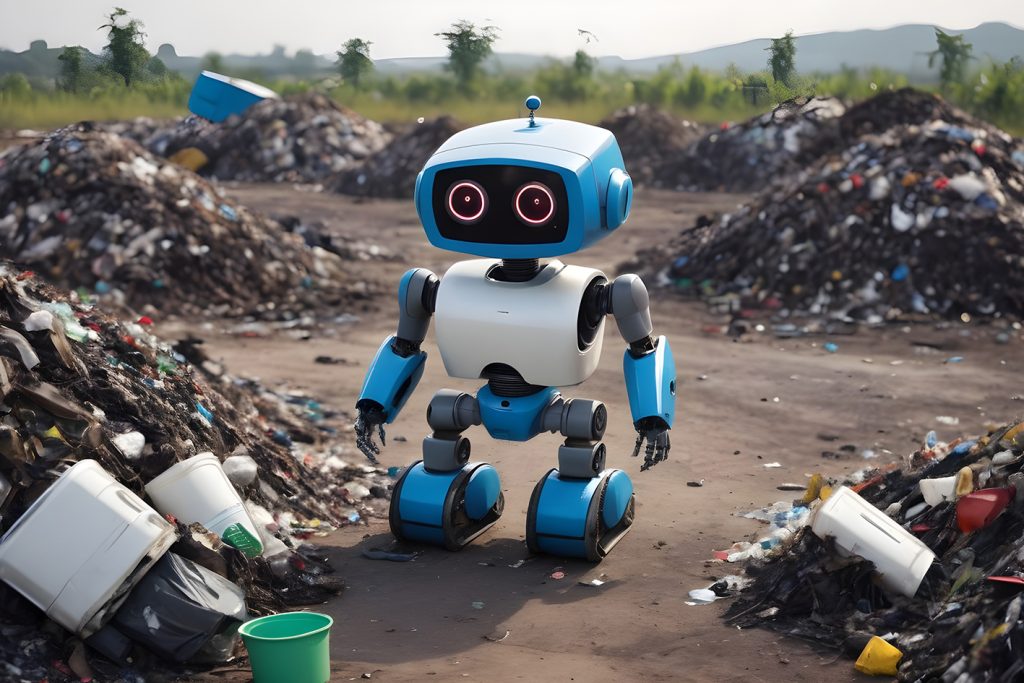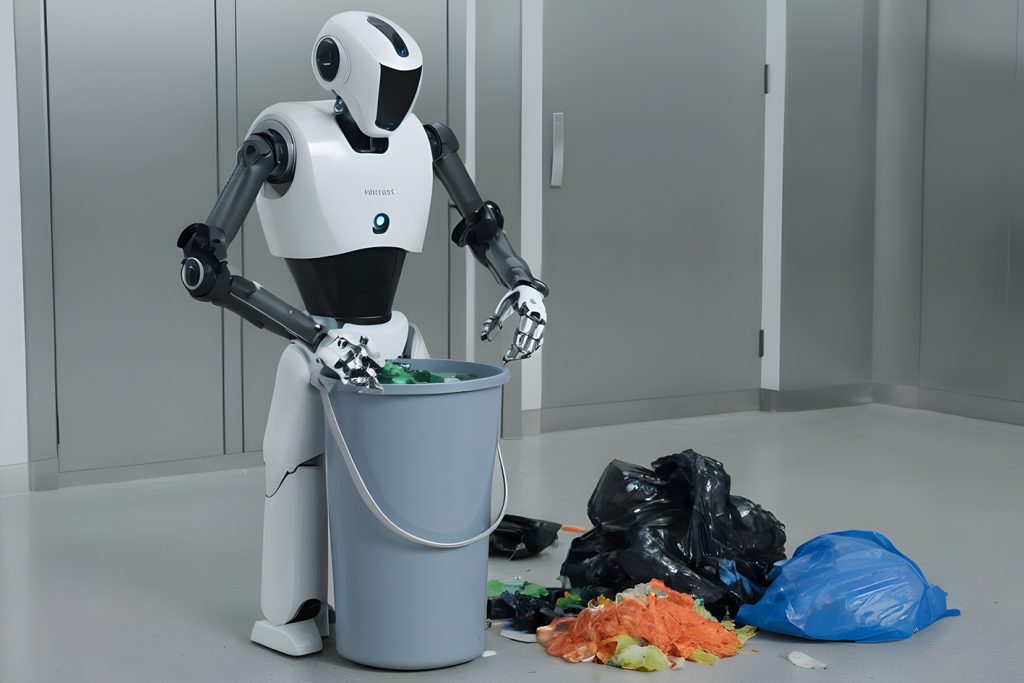
Waste Not, Want Not!!
Sustainable waste management is a vital part of a broader economy. In a rapidly industrializing world with an increasing population, effective waste management has emerged as a pivotal concern for the well-being of our planet. Conventional waste disposal methods have become increasingly unsustainable. Landfills are reaching capacity, oceans are overwhelmed by plastic pollution, and the atmosphere is burdened with rising greenhouse gas emissions.
As the world grapples with the accelerating effects of climate change, there’s a notable shift in traditional waste management methods. Emerging AI technologies offer a promising avenue to not only boost efficiency but also mitigate environmental harm. Waste management has swiftly transitioned from a future concern to an urgent priority. Despite this, many nations still rely heavily on manual waste management processes. Even in affluent countries, a significant portion of waste management tasks remain labor-intensive and manual.
Advanced Technologies in the Waste Management Industry
Advanced technologies are revolutionizing the waste management industry. With the help of innovations like AI, computer vision, and machine learning, we can better manage waste and reduce environmental impact. These technologies streamline processes, making operations more efficient and sustainable. By leveraging these advancements, the waste management industry is moving towards a greener and more sustainable future.
How Does AI Help Control Waste Management?
The increasing volume of waste worldwide is leading to pollution, waste management issues, and recycling challenges. This necessitates the adoption of innovative technologies such as artificial intelligence to improve waste ecosystems.
Yes. Artificial intelligence is a rapidly evolving technology that is gaining traction in a variety of areas, including waste management. Intelligent bin systems, waste-sorting robots, sensor-based waste monitoring, and predictive models of waste generation are the various applications of artificial intelligence in waste management.
In the quest for sustainable and efficient waste management solutions, the integration of artificial intelligence has emerged as a game-changer. The advent of AI-powered smart bin systems is revolutionizing how we handle and process waste, offering a myriad of benefits for both urban environments and businesses.
Smart garbage bins primarily focus on autonomously monitoring waste filling levels and warning users in real-time. Sensors receive and transmit data across the network. AI smart bins are part of a connected ecosystem where they communicate with each other and central monitoring systems. This interconnected network allows for seamless coordination, enabling waste management teams to respond proactively to changing conditions and demands. Such a system ensures a swift and effective response to overflowing bins or other issues.
Waste Sorting Robots

In the pursuit of a more sustainable and efficient recycling process, waste-sorting robots have emerged as innovative contributors to the waste management landscape. These robotic systems bring a new level of precision and automation to the sorting process, addressing challenges in traditional recycling methods and paving the way for a greener future.
According to some reports in the journal, AI bots can sort 80 pieces of recyclable material every minute, but humans can only sort 50 to 80. Waste sorting robots often incorporate artificial intelligence and machine learning algorithms, allowing them to improve their sorting capabilities over time. Robots excel in accurately identifying and sorting materials by learning patterns and adapting to changes in waste composition.
Precision Sorting for Recycling Excellence
Traditional waste bins are typically contaminated, making recycling efforts ineffective. AI smart bin systems use advanced sensors and image recognition technologies to properly sort waste. This precision guarantees that recyclables are segregated from general garbage, which improves recycling efficiency.
Sensor-based Waste Monitoring
Sensor-based waste monitoring systems utilize advanced sensors placed within bins to provide real-time data on waste levels. AI algorithms process this information, enabling waste management teams to monitor fill levels remotely and plan optimized collection routes.
Advanced sensors, coupled with AI image recognition, can identify contaminants within waste streams. This enables immediate intervention to address contamination issues, ensure the quality of recyclable materials, and reduce the environmental impact.
Predicative Models for Waste Management
Accurate prediction of water quality changes during the water treatment process is critical for making optimal decisions such as designing, operating, and diagnosing water treatment plants. The AI algorithm model predicts dissolved organic carbon removal and compares existing empirical models and prediction results to examine the applicability of AI algorithm techniques for water quality prediction in the water treatment process.
In the case of contamination reduction, AI effectively detects pollutants in recycling streams, preserving material purity and improving recycling quality. Technologies like AI and robotics rapidly identify materials, while education and community engagement promote proper waste disposal. These efforts streamline processes for a cleaner future.
Role of Data Labeling?
Data labeling is essential in AI waste management, enabling machine learning models to classify, collect, and dispose of waste effectively. Through precise labeling, models can identify various waste materials like plastics, paper, glass, and organic waste in images or videos. This annotated data is crucial for object detection algorithms, allowing accurate identification of waste items in real-world settings. Text annotation helps extract valuable information from textual sources for tasks such as waste composition analysis and recycling guidelines. Geospatial annotation enhances waste management by identifying disposal sites, optimizing collection routes, and pinpointing areas with high waste generation rates.
Time to Conclude,
After examining some of the ways AI is being used for waste management, we can identify some significant benefits that it can offer. First, it can save money by reducing overhead. Also, it can increase turnover by decreasing contamination, which results in higher-quality recycled products. Furthermore, AI recycling can eliminate the need for humans to perform potentially hazardous jobs, like sorting e-waste, which typically contains poisonous compounds. AI in trash management can assist in developing more efficient, user-friendly, and cost-effective recycling systems, potentially increasing recycling rates. The way we live is transforming due to artificial intelligence, and, unquestionably, this shift can yield positive environmental outcomes. In the field of waste management, it is imperative not to disregard the potential influence that AI can have on the environment.
Ultimately, AI’s impact on waste management extends to environmental conservation. By optimizing processes, reducing contamination, and fostering a circular economy, AI plays a pivotal role in mitigating the environmental impact of waste disposal and promoting a more sustainable future.